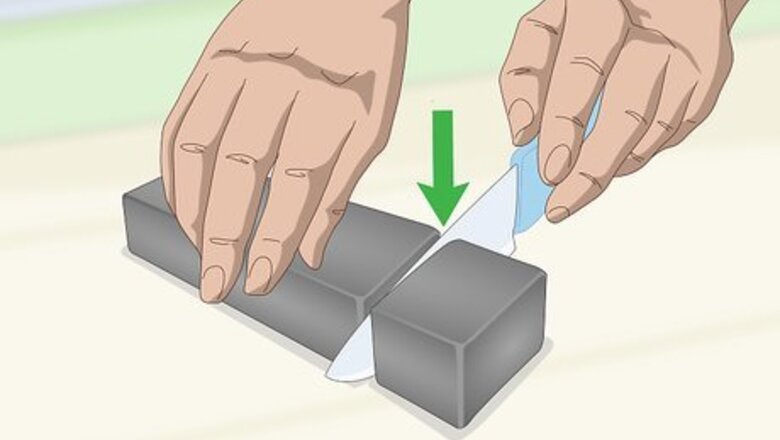
views
X
Research source
These plants are loaded with vitamins and nutrients that are great for your skin, making African black soap a nourishing addition to any beauty routine. You can also make your own shampoo from African black soap by mixing the soap, water, and your favorite oils!
Using Raw African Black Soap on Your Skin
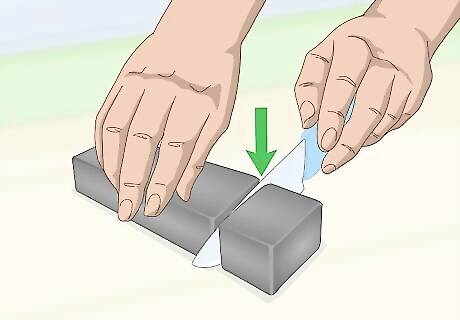
Slice a block of African black soap into bars. Since black soap is usually sold in a large block, you can prolong the life of your soap by using a sharp knife to slice it into bars. That way, you can keep what you’re not using in a sealed container in the refrigerator, and just keep what you need in a smaller container near your sink or shower. Having smaller bars of soap is also easier to work with, especially when your hands are wet.
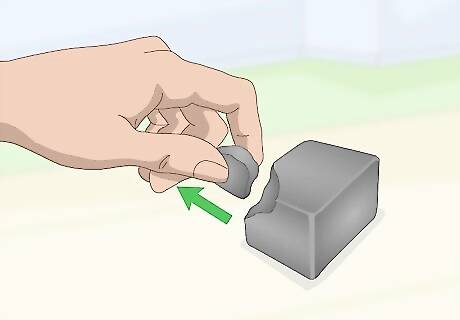
Pinch off a small piece of black soap and roll it into a ball. Since black soap contains vegetable matter that can be rough against your skin, it’s best to work with just a little at a time. This helps prevent irritation due to larger pieces of tree bark or pulp that didn’t get broken down all the way. In addition, some people experience a burning or stinging sensation when they apply black soap directly to their skin. Lathering up a small amount first can help prevent this from happening.
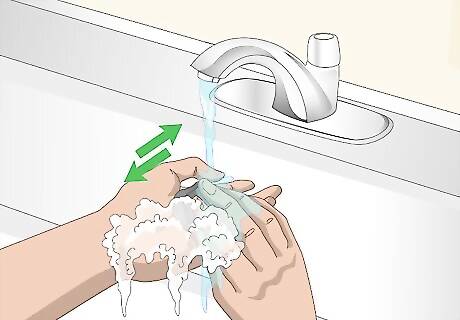
Wet the soap and rub it to create lather. Black soap contains ingredients like palm kernel oil and coconut oil, both of which contain lauric acid. The lauric acid creates a natural, foamy lather when you rub the soap between your wet hands. You only want to create enough lather to create a light layer on your skin. Too much lather can be drying. If you like, you can use a washcloth or a loofah to lather up the soap.
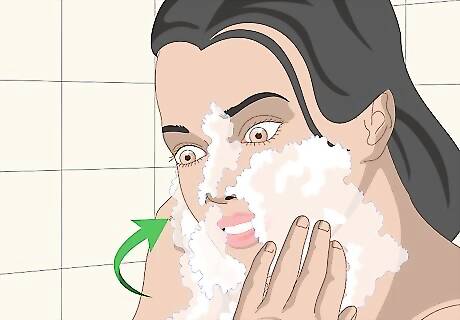
Rub the soap gently into your skin. You can use black soap on your face and your body. Massage the soap into your skin using your fingertips, washcloth, or loofah. The black soap will gently cleanse and exfoliate your skin. Black soap is often used to treat acne, soothe rosacea, lighten dark spots, and heal rashes. Since black soap can be drying, it’s best to use it about 2-3 times a week. Use a gentle moisturizing cleanser formulated for your skin type on the other days.
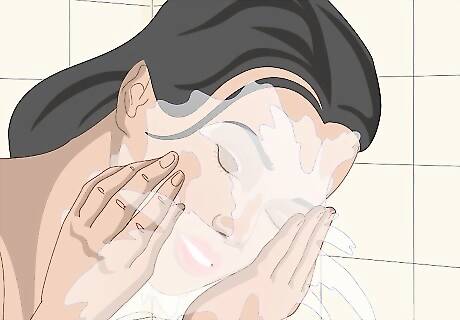
Rinse away the soap with cool water. Just as when you wash your face with any other soap, you should rinse away any residue from the African black soap once you’re finished washing. In addition to washing away any dirt or oils from your skin, rinsing the soap away will remove the soapy residue that can dry out your skin if it’s left behind.

Dry off your skin and apply a toner. African black soap is alkaline, which can throw off the pH balance of your skin. You can counteract this by applying a little toner to a cotton ball, then gently patting it onto your skin. Look for a toner made from soothing ingredients like witch hazel or rosewater, as opposed to alcohol, which can be very drying.

Apply a gentle moisturizer to your skin. Since black soap can be a little drying, you should follow up with a lightweight moisturizer. In addition to keeping your skin hydrated, this can help seal in the nutrients left behind from the vegetable-based black soap. If you’re washing your face with the black soap, use a moisturizer specifically designed for use on your face. The skin on the rest of your body is thicker, so body lotion tends to be much too heavy for use on your face.
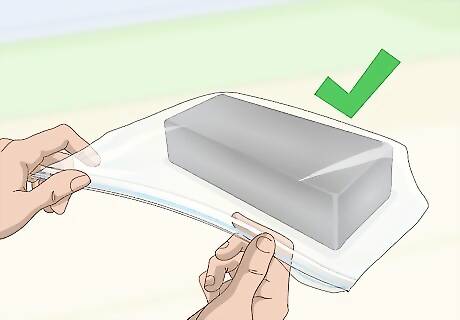
Store the soap in an airtight container or sealed plastic bag. To prolong the life of your soap, keep it in a sealed container. If left exposed to the air, the soap will harden and become difficult to use. Sometimes black soap will develop a white film. This is normal and doesn’t affect the quality of the soap.
Making Shampoo with African Black Soap
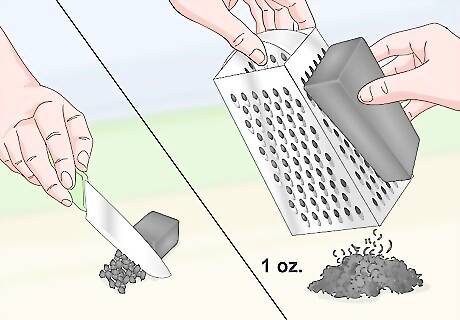
Chop or grate 1 oz (28 g) of African black soap into small pieces. Smaller pieces of soap will dissolve more easily in warm water than big chunks, so it’s best to break it up. Since black soap usually comes in large blocks, it will probably work best to slice off a small piece that’s roughly 1 oz (28 g), then either grate it or chop it up finely with a knife. The measurement doesn’t have to be exact. Just use the initial weight of your black soap to estimate what 1 oz (28 g) would look like. For instance, if you buy a 4 oz (110 g) block of soap, you would use approximately a quarter of it.
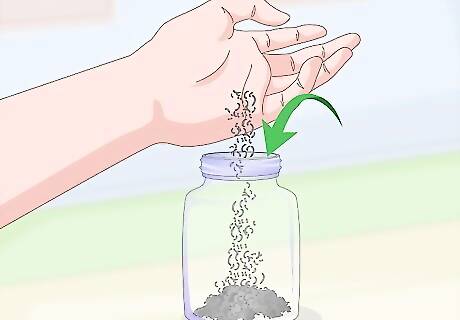
Place the soap in a small jar with an airtight lid. Even if you want to put your finished shampoo into a squeeze bottle for easy dispensing, it’s best to start out by placing it into a plastic or glass jar. This will make it easier to stir together the ingredients as you make your shampoo. Having a lid that seals tightly will allow you to swirl or shake the shampoo once you add in the oils.
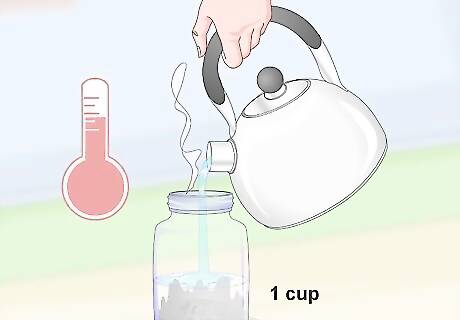
Pour about 1 cup (240 mL) of very hot water over the soap. The hotter the temperature of the water, the better it will melt the soap. For best results, you should boil the water first, but if you prefer, you can just heat it up in the microwave. If you want a thinner shampoo, use a little more water, or use less water if you’d prefer a thicker shampoo. Always use caution when microwaving water, and stop the microwave before the water boils. If it gets too hot, it could explode. Check your microwave’s instruction manual to find out how long you can safely microwave liquids if you’re not sure.
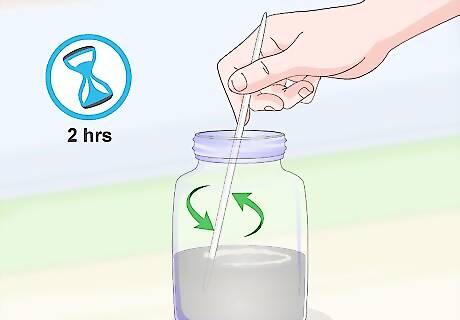
Let the soap mixture sit for about 2 hours, stirring occasionally. The soap should slowly dissolve into the water as the mixture cools. Every 20 minutes or so, stir the soap with a spoon or a wooden stick to help speed up the melting process. If you notice that the water is completely cooled and the soap has not melted, place the mixture in the microwave for about 30 seconds and stir it again.
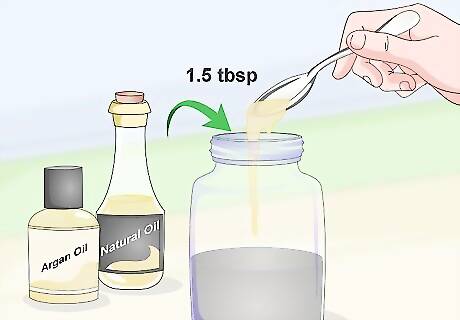
Stir in 1.5 tablespoons (22 mL) each of 2-3 of your favorite oils. Black soap can be drying on its own, so it’s best to add natural, nourishing oils to the shampoo so leave your hair super-soft. Once the soap and water mixture has cooled, add in oils like jojoba, coconut, olive, or argan oils. Other oils you could use include shea butter, grapeseed oil vitamin E, or neem oil. If you use coconut oil or shea butter, just scoop out the amount you need and microwave it to melt the oil before adding it to your base. This shampoo is endlessly customizable. If you’re not sure which oils you want to use, try reducing the recipe and make several small portions with different combinations to see what you like the best.

Add about 10 drops each of 1-3 of your favorite essential oils if you’d like. If you want your shampoo to be scented, you can add essential oils like rosemary, chamomile, lavender, tea tree, or peppermint to your shampoo. Just measure about 10 drops of each into the shampoo mixture and stir them in. In addition to smelling amazing, many essential oils can help improve the health of your hair. For instance, rosemary oil is thought to stimulate hair growth and increase circulation. Lavender essential oil helps keep your hair shiny and controls dandruff. Peppermint oil helps to promote hair growth. Avoid using citrus essential oils in your hair, as they can increase your skin's sensitivity to the sun. This can lead to a nasty sunburn on your scalp if you spend time outdoors.
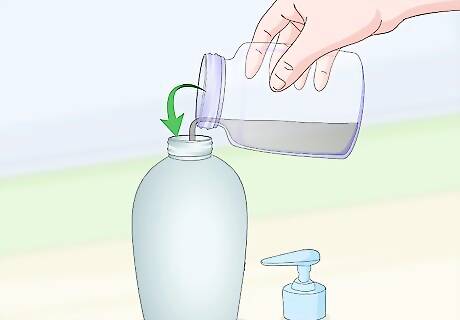
Transfer the mixture to a dispenser bottle if you want. Once your shampoo mixture is finished, you may want to add it into a squeeze bottle so you can easily apply it to your hair. You can use an old shampoo bottle or a bottle with a pointed tip, such as a condiment dispenser, to make it easier to apply the shampoo directly to your roots. If you used shea butter or coconut oil, you may need to microwave your shampoo to thin it out before you use it. African black soap doesn't expire, but some essential oils do have a shelf life, which may affect the life of your shampoo.
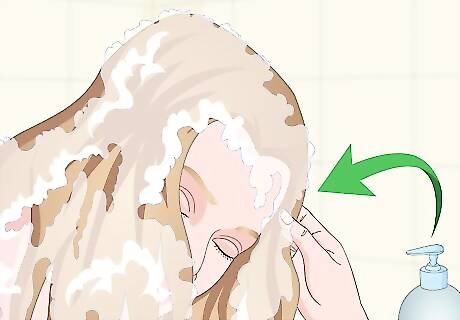
Wash your hair as usual with the African black soap shampoo. Wet your hair, then apply the shampoo to your roots and massage it in. Black soap shampoo will lather, but it might not lather as much as commercial shampoos that you’re used to. Since some settling can occur, you might want to shake or stir the shampoo before you use it. This shampoo is very effective at removing dirt and oils from your scalp. As with most clarifying shampoos, it's best to limit its use to every 2-3 washes.

Rinse your hair with cool water or apple cider vinegar. Just as with regular shampoo, you’ll need to rinse your hair thoroughly after you wash it. Using cool water to rinse your hair will help close the cuticle, sealing in moisture and leaving your hair looking shiny and smooth. Since African black soap can be alkaline, you may want to rinse your hair with diluted apple cider vinegar to help balance out your hair’s pH before you condition it. However, if you don’t have apple cider vinegar, or you don’t like using it, this isn’t necessary.
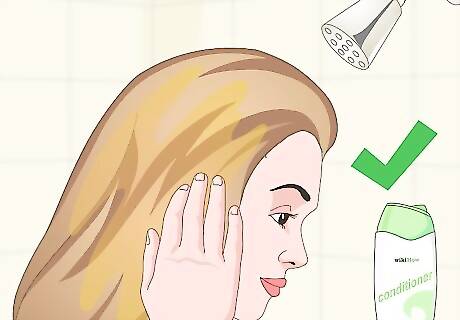
Condition your hair with your regular conditioner. Thanks to all of the oils added in your African black soap shampoo, your hair will be nourished and moisturized. However, the shampoo does tend to leave your hair tangled. To counteract this, condition your hair after you wash it with your favorite conditioner. Almost all commercial conditioners contain detanglers.


















Comments
0 comment